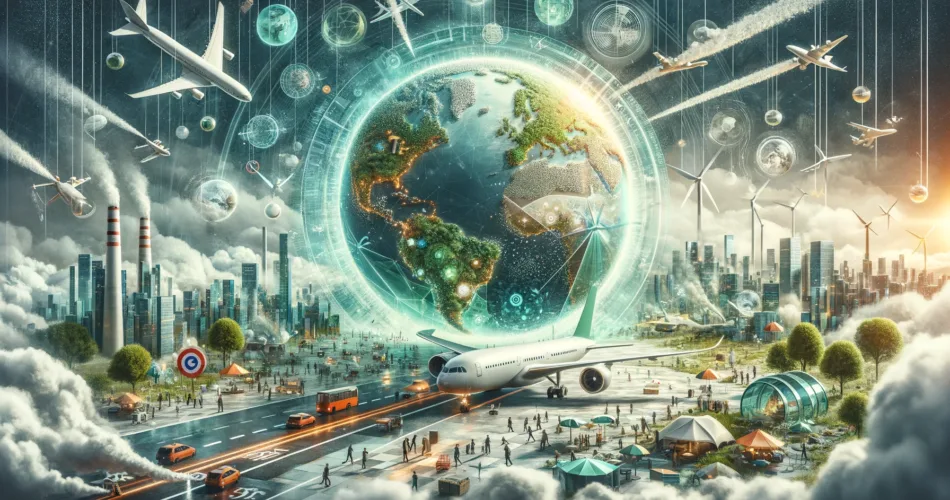The idea of a world without air travel, driven by the urgent need for climate protection, presents a scenario that stretches the limits of our imagination and challenges our current lifestyle. With flying being a significant contributor to carbon emissions, the conversation around sustainable aviation is more crucial than ever. This exploration delves into the complexities of achieving climate-neutral flying, the technological innovations on the horizon, and the societal implications of a potential shift in how we view and utilize air travel.
The Dilemma of Air Travel
Flying has become an integral part of modern life, facilitating global connections, economic growth, and cultural exchange. Yet, its environmental impact is undeniable, with air travel accounting for a significant portion of global carbon emissions. The challenge lies in balancing the benefits of flying with the pressing need to address climate change.
Technological Innovations in Aviation
The aviation industry is actively seeking solutions to reduce its carbon footprint. Electric planes, hybrid aircraft, and hydrogen-powered flights represent the forefront of this endeavor. While electric planes offer a cleaner alternative for short distances, their current limitations in range and passenger capacity hinder their applicability for long-haul flights. Hybrid aircraft may bridge this gap to some extent, but the ultimate goal is to develop hydrogen-powered planes capable of long-distance travel without emitting carbon.
Hydrogen: The Fuel of the Future
Hydrogen stands out as a promising solution for climate-neutral aviation. Its combustion produces water vapor instead of carbon dioxide, making it an ideal green fuel. However, challenges remain in storing hydrogen efficiently on aircraft due to its volume and the need for specialized tanks. Despite these hurdles, the potential of hydrogen to revolutionize air travel is immense, provided that the hydrogen is produced using renewable energy sources.
The Role of Synthetic and Biofuels
The development of sustainable aviation fuels, such as synthetic kerosene and advanced biofuels, offers a transitional solution. These fuels can significantly reduce the carbon footprint of existing aircraft without requiring major modifications to engines or infrastructure. The key to their sustainability lies in the methods of production, emphasizing the importance of using renewable energy and avoiding competition with food crops or contributing to deforestation.
Rethinking Air Travel: A Shift in Perspective
The possibility of a world without flying, although extreme, prompts us to reconsider our travel habits and the value we place on air travel. Reducing unnecessary flights, embracing alternative modes of transportation for shorter distances, and investing in virtual communication technologies could alleviate some of the environmental pressures associated with flying.
The Importance of Global Connectivity
Despite the environmental concerns, the benefits of air travel in terms of global connectivity, economic development, and cultural exchange cannot be understated. The challenge is to find a balance that preserves these benefits while mitigating the environmental impact. This requires a collective effort from governments, the aviation industry, and individuals to prioritize sustainability in air travel.
The Future of Flying: A Green Horizon
The journey toward climate-neutral flying is fraught with challenges, but the innovations in aviation technology and fuel development offer a glimpse of a more sustainable future. The transition to green aviation will not happen overnight, but with continued investment in research and development, a significant reduction in the environmental impact of air travel is within reach.
A Call to Action
As we navigate the complexities of making air travel sustainable, it is clear that a multifaceted approach is necessary. This includes technological innovation, changes in policy and regulation, and a shift in societal attitudes towards flying. The dream of flying need not be over; instead, it must evolve to meet the demands of a climate-conscious world.
The future of flying is on the horizon, promising a world where we can explore the skies without compromising the planet. Achieving this vision will require perseverance, collaboration, and a commitment to innovation. As we strive for a greener future, the skies remain a testament to human ingenuity and our capacity to adapt and overcome the challenges we face.

